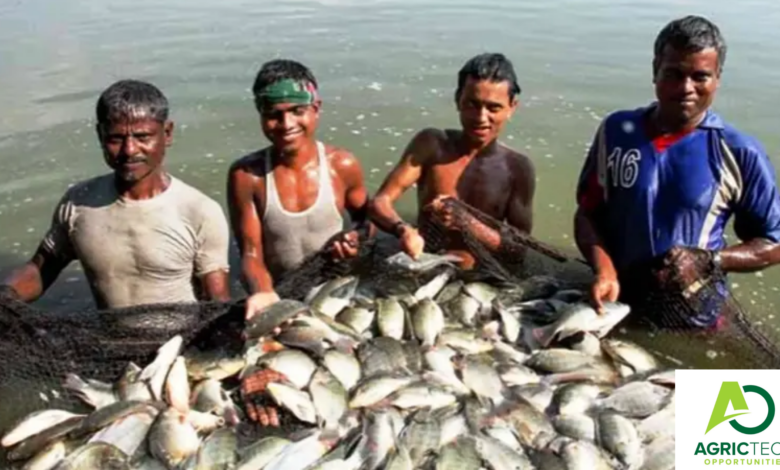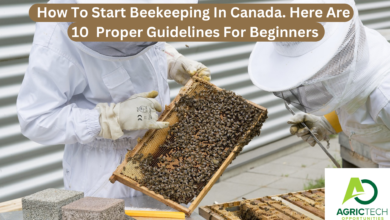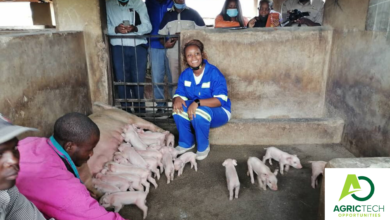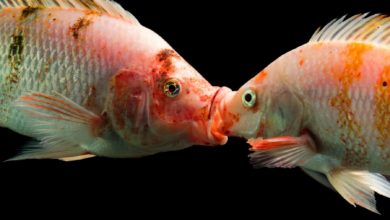Profitable Fish production In Zimbabwe 2023

Host
Global Fish Production
Target Audience
Fish Farmers
Introduction
The main types of fish produced in Zimbabwe include tilapia, catfish, and trout. Tilapia is the most commonly farmed fish in the Zimbabwe, as it is well-suited to the local climate and can be easily bred in ponds and tanks. Catfish farming is also gaining popularity, particularly in the eastern parts of the country.
Fish production in Zimbabwe has been steadily increasing over the years. The country has several natural water bodies, including lakes, rivers, and dams, which provide suitable conditions for fish farming.
ALSO READ: All You Need To Know About Dairy Milk Quality 2023 Addition
Despite the growth in fish production, Zimbabwe still relies heavily on fish imports to meet the demand. The government is working towards increasing local production to reduce the country’s dependence on imports and boost the economy.
Trout production
Trout farming is mostly done in small-scale operations, with the fish being sold to local markets and restaurants. Confined to the high-altitude Eastern Highlands where temperatures are cooler and the water quality is good. Trout farming is mainly concentrated in the highland areas, where the cool temperatures and clean water are ideal for this cold-water species.
•Species cultured
•Rainbow Trout (Oncorhynchus mykiss)
•Brown Trout (Salmo trutta)
In recent years, the government of Zimbabwe has been promoting fish farming as a way to improve food security and create employment opportunities. Various initiatives and programs have been implemented to support fish farmers, including training, access to credit, and the provision of fingerlings and fish feed.
Fisheries Regulatory framework in Zimbabwe
Aim of regulations
1.Control Illegal, unreported and unregulated (IUU) fishing
2.Prevent growth overfishing
•Fisheries and aquaculture management regulations -Parks and Wildlife Act–Chapter 20:14 of 1996
•Parks and Wildlife Management Authority (PWMA) grants authority for aquaculture on state dams and in water designated as Recreational Parks
Management strategy for fisheries resources in Zimbabwe
1.Sustainable utilization of the resource
2.Maintenance of biological diversity
3.Maintenance of the amenity value of the lakes and dams e.g. Lake Kariba
ALSO READ: Understanding The Ostrich Industry In Zimbabwe and South Africa 2023 Guide 2023‘
The regulations are effected through
1.Licensing
2.Gear restrictions – net sizes, types, rods and line
3.Where to fish – closed and protected reserves
Fisheries management strategies
Closed and protected reserves
•enhance recruitment,
•protect breeding areas,
•conserve fish stocks that become reservoirs for replenishing neighbouring fished areas
•maintain biodiversity for the long term
On Lake Kariba approx. 600 km of shoreline is closed to fishing
Matemba/Kapenta fishing in Kariba
•Year round fishing, except during full moon
•license-controlled industry
•highly mechanised
•performed by light attraction and lift nets from pontoon rigs
•Fish are sun dried
•Recruitment and growth over-fishing is reduced by restricting the minimum net mesh size to 8 mm
•Pre-recruits occur in water less than 20 m deep so fishing is confined to areas more than 20 m deep
•Fishing is prohibited within a 2-km radius of all river mouths in order to protect species on spawning runs up the rivers
ALSO READ: The Benefits of Doing an Internship: How It Can Help You Get Ahead in Your Career
Potamodromous fish– Born in upstream freshwater habitats, then migrate downstream as juveniles to grow into adults before migrating back upstream to spawn. Examples: sicklefin red horse, lake sturgeon, flat-head catfish
Aquaculture activities
1.Hatchery – produce seed or young fish used to stock grower facilities
2.Grow-out – produce crops from the seed on intensive or extensive, land or water based systems
3.Harvesting – gathering and capture of fish for processing and marketing; topping (partial) or total harvesting
4.Processing – Value addition, shelf life, convenience, etc.
•Fish turned into fresh refrigerated products, bone fillets, seasoned marinated, smoked products, etc.
5.Marketing – get fish to market: food, feed ingredients, bait, pets, sport fish
6.Environmental management
Characteristics of fish species
•Ectothermic
•Environment regulates temperature; save energy
•Body density similar to habitat
•No need to use energy to overcome gravity
•Reduced energy required for acquiring food
•Food can be dissolved in the water
•Efficient feed conversion
•1-1.5:1, close to pig and broiler
•Rapid growth
•Live in multidimensional environment
•Expands the aquaculture options available at a single production site (poly-culture)
•Fish, crustaceans and molluscs occupy different spaces
•Floating cages, pens attached to the bottom and extending above the surface create multi-dimensional space
Species choice
•Reproductive habits
•Must be ease and occur frequently to produce massive quantities
•Selection and genetic improvement must be possible
•Egg and larvae requirements
•Need to be large, hardy and ease to culture
•Nutritional needs
•These differ by species
•Feeding habits
•Low on the food chain– consumes low-cost vegetable matter or primary foods within the pond e.g., carp, tilapia, crawfish
•High on the food chain – require a more extensive, high protein diet; e.g., shrimp, trout, bass
•Possibility for poly-culture
•Depends on production system
•Poly-culture increases aquatic production by using species that occupy different niches and dimensions of the water
•However, in intensive culture systems growth rate is more important than efficiency in the use of water space and nutrients. Better use monoculture in this latter case
•Adaptability to crowding
•Crowding increases productivity and management at the same time
•Species need to be adaptable to crowding
•Disease tolerance
•Depends on production site
•Market demand
•Is there a market for the species or type of product?
•Where are the customers?
•How can the product reach the consumer, can she afford the product?
Overall, fish production in Zimbabwe is on the rise, and with continued support and investment, the country has the potential to become self-sufficient in fish production and even export to neighboring countries.
ALSO CHECK: 4 Ways To Increase Live Weight In broilers And Egg Size In layers
For more updates On Agric Tech Opportunities kindly join the social groups below:




